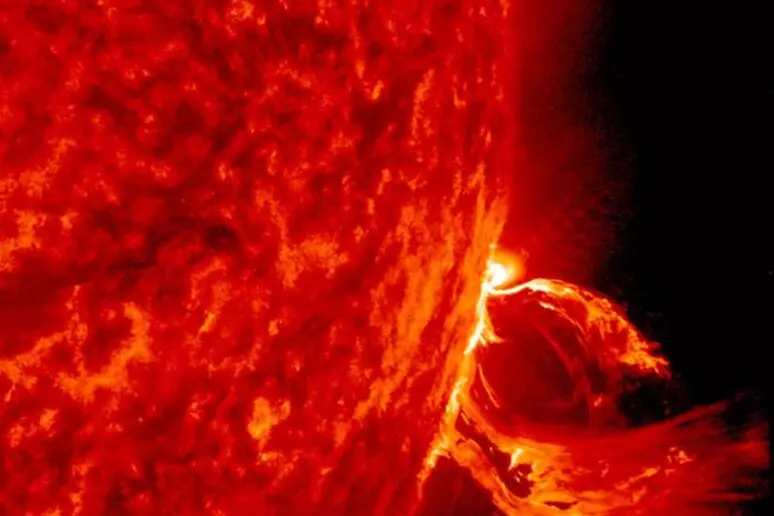On July 15, a gigantic solar flare generated a 400,000-kilometer-long “fire canyon,” equivalent to the distance between Earth and the Moon, with walls over 20,000 kilometers high. The event was captured in real time by NASA’s Solar Dynamics Observatory (SDO). The spectacular images show a solar filament that collapsed, generating a powerful coronal mass ejection (CME) into space.
At first, there were fears that the mass of incandescent plasma could head toward Earth. However, more recent analyses conducted using the SOHO satellite’s coronagraphs have ruled out this possibility and the risk of geomagnetic storms.
Coronagraphs are optical instruments designed to artificially obscure the Sun’s disk, simulating an eclipse. This allows astronomers to observe the solar corona — the outermost part of the Sun’s atmosphere — and detect phenomena such as coronal mass ejections. They are essential for monitoring solar activity and predicting any effects on our planet.
CMEs are one of the most intense manifestations of solar activity: they consist of the sudden ejection of enormous quantities of plasma and magnetic field from the solar corona. These charged particles can travel through space at speeds exceeding 1,000 km per second. If they hit Earth, they can cause disturbances to radio communications, satellites, and power grids—a significant problem in a world increasingly dependent on the internet and satellite services. However, CMEs are also responsible for a fascinating natural phenomenon: the beautiful polar auroras.










